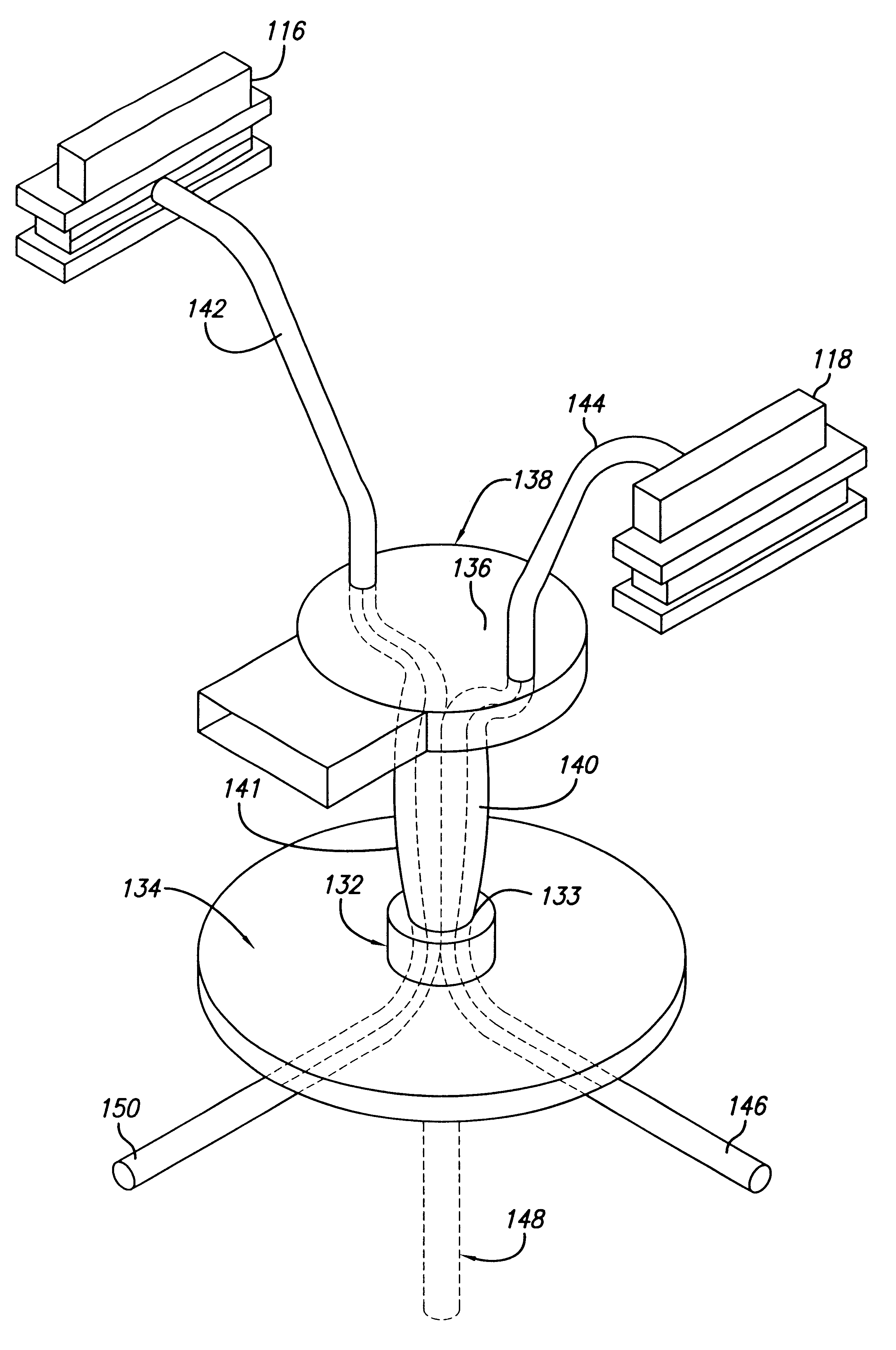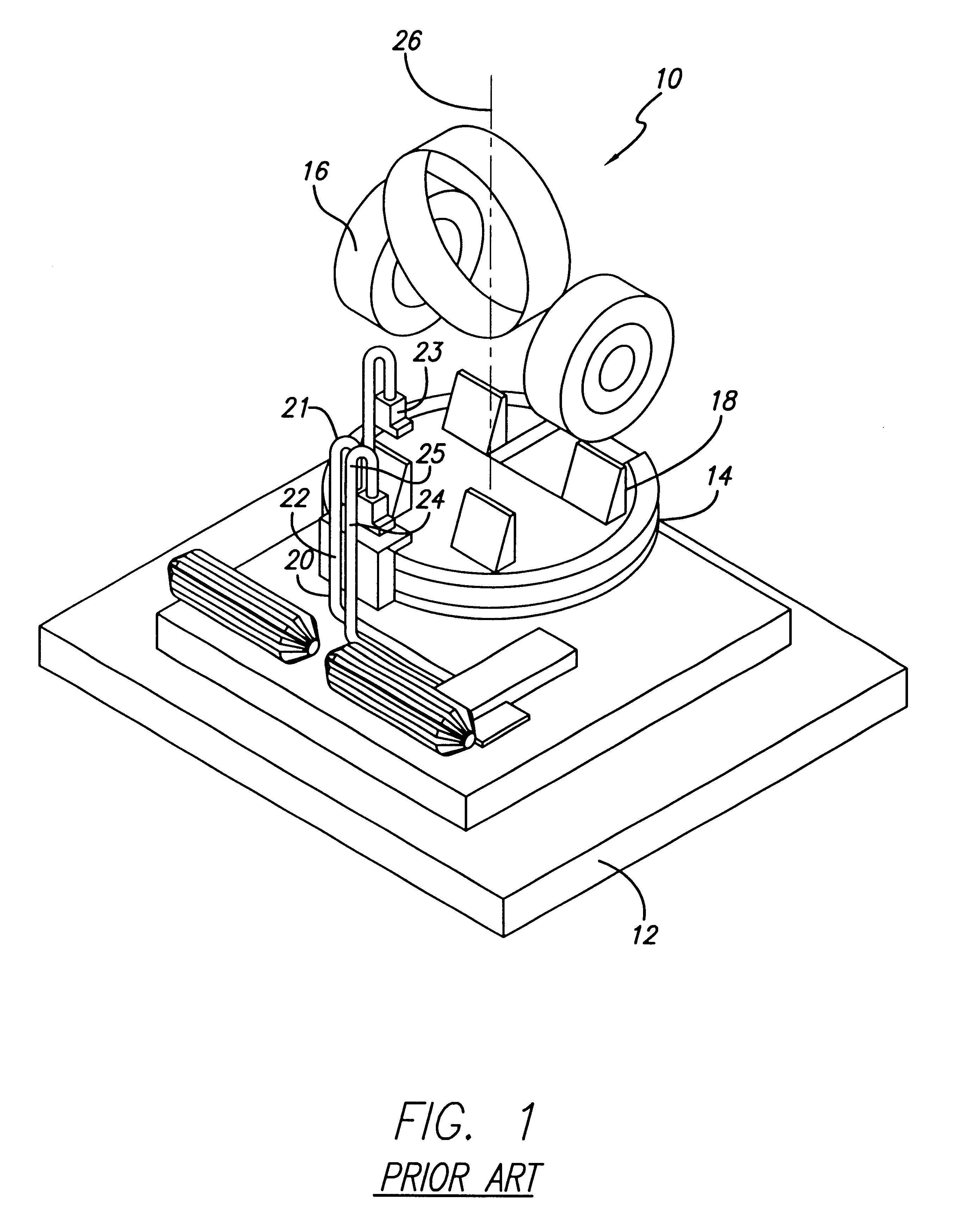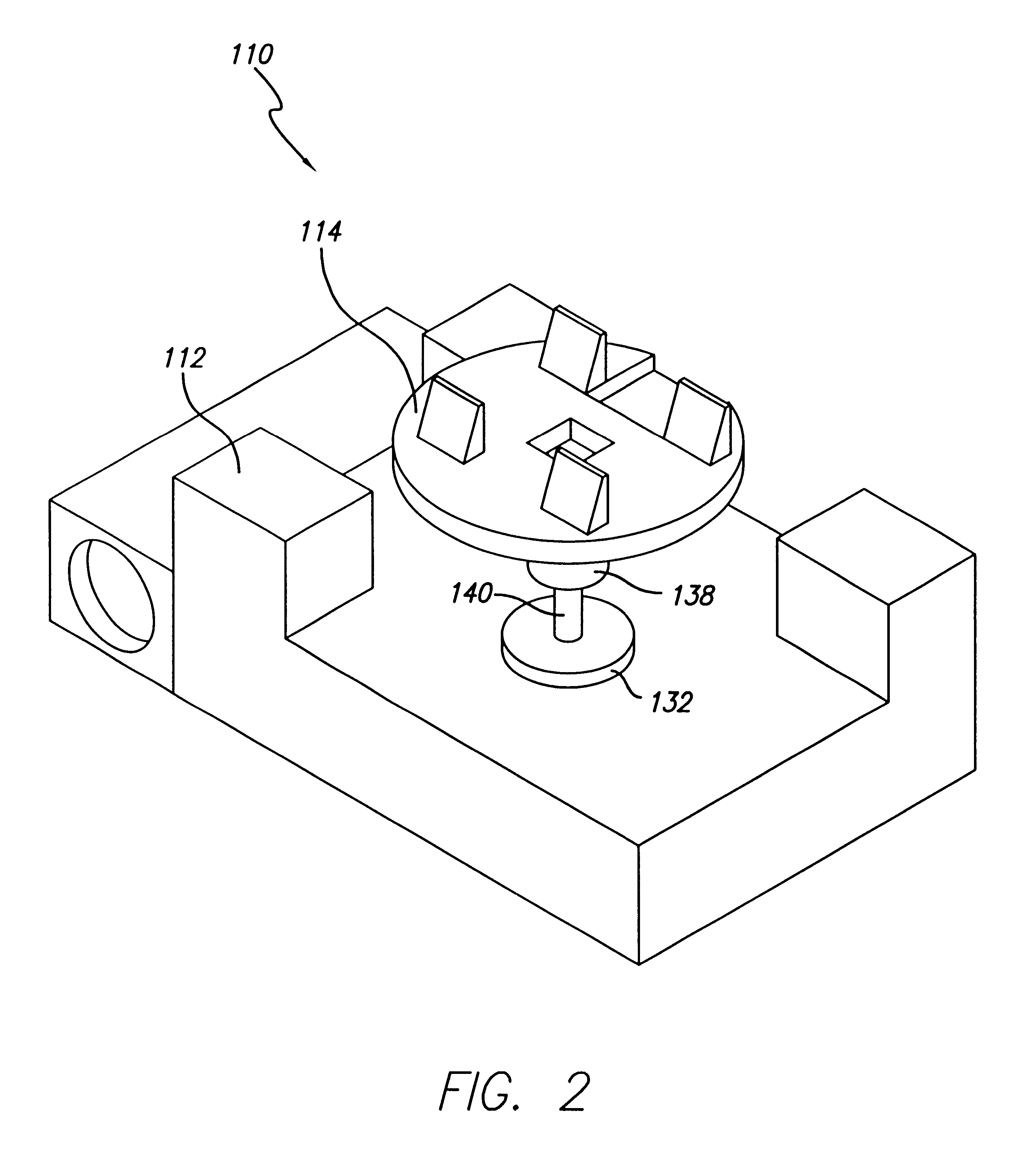Birdcage torsion harness assembly for rotating gimbal
a technology of torsion harness and rotating gimbal, which is applied in the direction of electrical/fluid circuit, vehicle components, electrical apparatus, etc., can solve the problems of generating both torsion and bending stress, the packaging of conventional torsion-loop designed harnesses usually does not allow axial displacement, and the moment that multiplies the restrictive for
- Summary
- Abstract
- Description
- Claims
- Application Information
AI Technical Summary
Benefits of technology
Problems solved by technology
Method used
Image
Examples
Embodiment Construction
Illustrative embodiments and exemplary applications are described below with reference to the accompanying drawings in order to disclose the advantageous teachings of the present invention.
As will be explained below, the present invention is unique in its ability to reduce the EMI problem described above as compared with existing harness assembles by minimizing the movement of the wire forming the bundles. Known "twist cap" wire arrangements require relatively long wires and incorporate a geometry which requires the wires to fold and slide over one another as the gimbal navigates across a specified angle. This movement is quantified as D.congruent.2.pi.d(.O slashed. / 360), where d is the diameter of a twist cap and .O slashed. is the gimbal angle navigated. An average diameter for a twist cap housing including 30-40 conductors is about 2 inches. For a twist cap navigating 180 degrees D (movement of the wires) equates to about 6 inches. By comparison, the present invention employs con...
PUM
 Login to View More
Login to View More Abstract
Description
Claims
Application Information
 Login to View More
Login to View More - R&D
- Intellectual Property
- Life Sciences
- Materials
- Tech Scout
- Unparalleled Data Quality
- Higher Quality Content
- 60% Fewer Hallucinations
Browse by: Latest US Patents, China's latest patents, Technical Efficacy Thesaurus, Application Domain, Technology Topic, Popular Technical Reports.
© 2025 PatSnap. All rights reserved.Legal|Privacy policy|Modern Slavery Act Transparency Statement|Sitemap|About US| Contact US: help@patsnap.com



